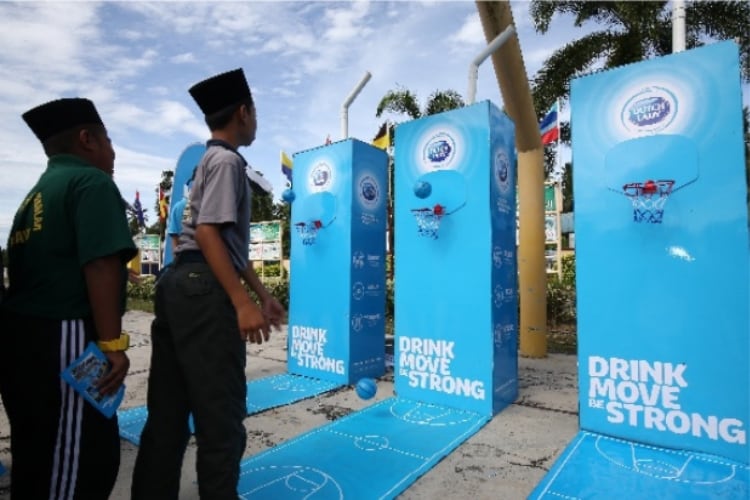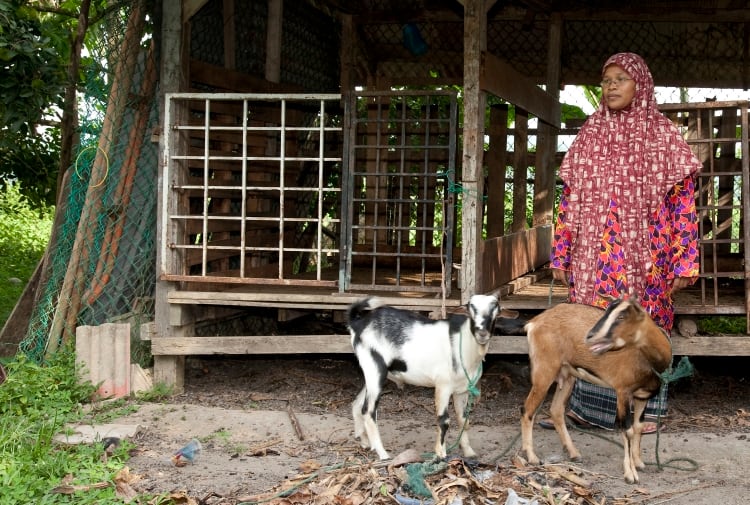Like Milo, another Malaysian beverage favorite that will unfailingly conjure up more misty feelings of whimsy, Dutch Lady is neither Malaysian nor is locked in the past. Generations after it first arrived on the local market in the form of imported sweetened, condensed milk, it remains a mass-market leader for pasteurized whole milk, baby milk formula and yogurt.
When you ask Malaysians about its origins, however, most won’t have the faintest idea. Some think it might have been inspired by the colonizers of the Dutch East Indies before it came to Malaysia. Most will say it’s over a century old.
Though still long in the tooth by local standards—the country gained its independence from the British in 1957 and has since quickly modernized from being a largely village-based society—it predates the change from Malaya to Malaysia by just a few years.
Name changes
Now owned by Royal FrieslandCampina, Dutch Lady first arrived in the Malay peninsula in 1954, imported by Friesland Foods from the Netherlands. Almost a decade later, Friesland incorporated Pacific Milk Industries and began production locally in the Petaling Jaya suburb of Kuala Lumpur. Employing nearly 600 staff, the factory was the Dutch company’s first outside the Netherlands, and soon afterwards it was listed on the local stock exchange.
In 1975, Pacific Milk changed its name to Dutch Baby Milk Industries before introducing baby food and opening up a UHT line. It only became Dutch Lady Milk Industries in 1984, with the completion of its diversified line.
Despite its popularity and place of high esteem, a recent decline in earnings has been widely reported over the last few weeks. Malaysia’s biggest dairy company's core net first-quarter profit of RM34.3m (US$8.3m) was 8% lower year-on-year, and considerably missed analysts’ expectations.
“We had anticipated a 30% contribution to financial year 2019 earnings due to seasonal weakness during the mid-year. The miss is owing to the poor top-line delivery and slower-than-expected margin recovery,” said one assessment, by Kenanga Research.
The dip was blamed on weaker sales, higher commodity prices and an underperforming domestic currency.
Healthy connection
Yet Dutch Lady’s newish managing director had expected the group to build momentum after a promising final quarter of last year, predicting a stronger ringgit and stabilized global dairy prices. These dual headwinds had caused a period of falling profits last year, which Tarang Gupta said should be met by encouraging more Malaysians to drink milk.
To this end, Dutch Lady’s challenge has been to persuade young Malaysians to continue consuming milk as they get older. The company says it loses milk drinkers when they reach 10 or 11 years old, as they discover other fizzy or juicy options. But their taste for dairy drinks returns when they reach 30.
To attract those in between, it has been investing in education and awareness campaigns for milk, sometimes in partnership with the government for schools programs, which include distributing milk to students and hosting activities to promote healthy lifestyles.
In 2014, when a survey revealed that children in Southeast Asia lacked vitamin D, Dutch Lady responded by launching a campaign to exercise outdoors for at least an hour a day. Since 2015, it has hosted educational activities on the importance of eating a balanced diet that includes milk, and doing physical sports daily. Currently, it supplies more than 1,500 school canteens across Malaysia so teachers and parents can see the benefits of milk, compared to sugary and carbonated drinks.
When a Unicef study last year revealed significant levels of malnutrition in Malaysian families living in low-cost housing Dutch Lady pledged to donate 720,000 packs of milk over the next three years. And last World School Milk Day, Dutch Lady delivered 10,000 packs of milk to schools across the country, in partnership with the Ministry of Education.
“That’s not corporate social responsibility, it’s just part of our model. We nourish them, and bring them the brand,” Gupta said recently.
In a country where per-capita milk consumption stands at just 12 liters of milk, according to a Kantar Worldpanel survey last November, adult milk drinkers consume little more than half a glass per week, rather than the recommended 2-3 a day. Clearly Dutch Lady wants to increase this.
Part of its current strategy is to encourage more people to drink more milk by blazing a trail into more foodservice establishments, including hotels, restaurants and coffee shops.
Growing consumption
With a generation of hip young Malaysians starting to drink lattes, cappuccinos and Frappuccinos in growing numbers, the firm’s consumer dairy marketing director has said she sees domestic milk consumption growing on the back of food joints and coffee shops expanding their businesses.
But, like so many major dairy companies around the world, its fortunes have been left struggling by global issues the company cannot control, such as the exchange rate and market prices. It is to the company’s credit, however, that it has managed over the years to maintain its place in consumers’ minds and affections, and from this approach it has deep foundations to build on, especially at a time when consumers are becoming increasingly health conscious.
Malaysians may not know much about Dutch Lady’s Dutch origins, and claim the brand to be their own, but they are cottoning on to their need to reduce their sugar intake and becoming increasingly aware of milk’s place in a balanced diet. Slowly, and in tandem with its exhaustive social marketing strategy, the brand is destined to grow much further.




